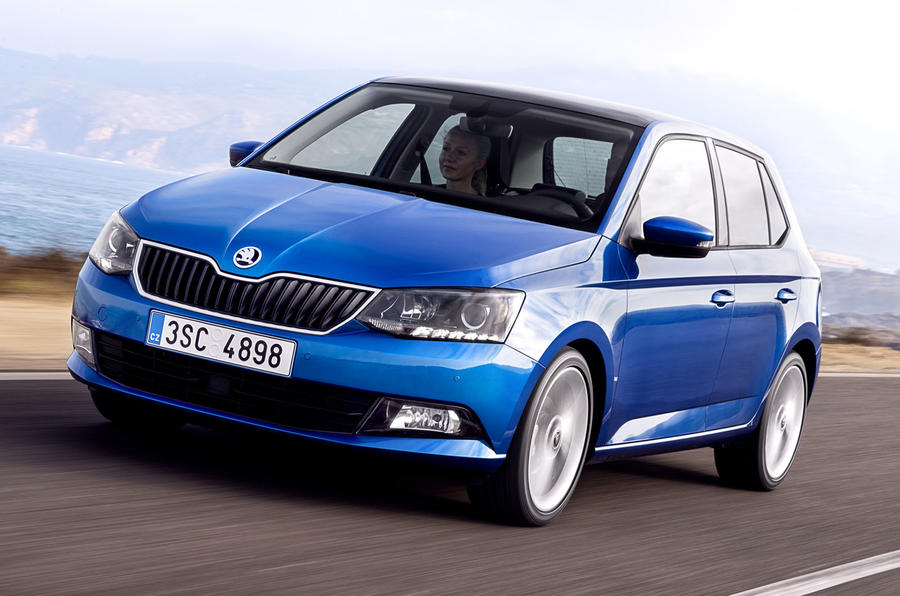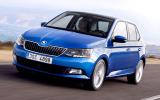What is it?
This is the third generation of Skoda’s Fabia supermini, arriving 15 years and 3.5 million sales after the first-generation version of the model.
Although Europe’s supermini segment – the second biggest market after the Volkswagen Golf class – continues to grow, it remains highly competitive. Low monthly purchase costs and running costs are all vitally important factors. The Fabia also arrives to face direct competition not only from its Volkswagen Polo sister car, but also from a cleverly revamped Vauxhall Corsa.
The new Fabia is a hybrid creation, mixing an updated version if the previous Fabia’s PQ26 platform and ‘elements’ of the new MQB architecture, which is used for the new Volkswagen Golf family. The base structure gets a redesigned engine bay and front subframe, and updated front and rear axles and suspension – which also give the car a wider track.
The result is a car that is 8mm than its predecessor, at just under 4m long, but a significant 90mm wider and 31mm lower. The wheelbase is also a marginal 5mm longer. Overall, the Mk3 Fabia is an average 65kg lighter than second-generation car.
Elbow room for the front passengers is up by a useful 21mm (though up by just 2mm in the rear) and the boot space is up to 330 litres, which Skoda claims to be ‘significantly more’ than competing models. With the rear seats down, there’s a handy 1150 litres of load space.
The biggest technical upgrade for the Fabia 3 is the adoption of VW’s latest generation of engines and transmissions, all of which were designed for use in more upmarket models based on the MQB platform.
There are four petrol engines starting with a 59bhp 1.0-litre to a 108bhp 1.2-litre TSI and a three-cylinder 1.4 diesel in 89bhp or 108bhp forms. If you want an automatic Fabia, which uses the seven-speed DSG ‘box, your choice is either the 89bhp diesel or the 98bhp 1.2 petrol turbo.
The 89bhp 1.4-litre TDI tested here offers a good compromise between real-world pace and being the most frugal unit offered in the Fabia. The CO2 rating of 88g/km and official EU combined economy figure of 83.1mpg are the kind of numbers that will appeal to cost-conscious new car buyers.
You can buy this engine is the base Fabia ‘S’ mode, which is well equipped (its gets a DAB radio, Bluetooth, electrically adjustable and heated wing mirrors, remote locking, stop-start and electric front windows) but it lacks air-con.
Spend another £1300 on the SE model and you’ll get plenty of other kit, as well as air-con, including a smart leather three-spoke wheel, 15in alloys, a trip computer, ‘mirror link’ (which allows you smart phone screen to be duplicated on the radio’s colour screen), upgraded ‘surround sound’ audio and ‘front assist’ auto braking. The upshot is a well-specced car, but a showroom price of £15,390.









































Add your comment
Pleasing to read...
Rather misleading facts and figures
Price £15,390; 0-62mph 11.1sec; Top speed 113mph; Economy: 83.1 (combined); CO2 88g/km; Kerb weight 1156kg; Engine 4cyls, 1422cc, turbocharged, diesel; Power 89bhp between 3000-3200rpm; Torque 169lbft between 1750-2500rpm; Gearbox Five-speed manual
Yet the article clearly says the engine has 3 cylinders, not 4; and that the gearbox has 6 speeds , not 5. I am also very suspicious of the powerfigures .... 89 between 3000 - 3200rm ..... definitely not .... VAG engineer friends state that max power arrives at 4000 rpm. In fact so numerous are the errors in the above ending paragraph, that I would advise all Autocar readers to completely ignore it.
Come on Autocar, please improve the factual content of these car reviews.
This looks like a decent